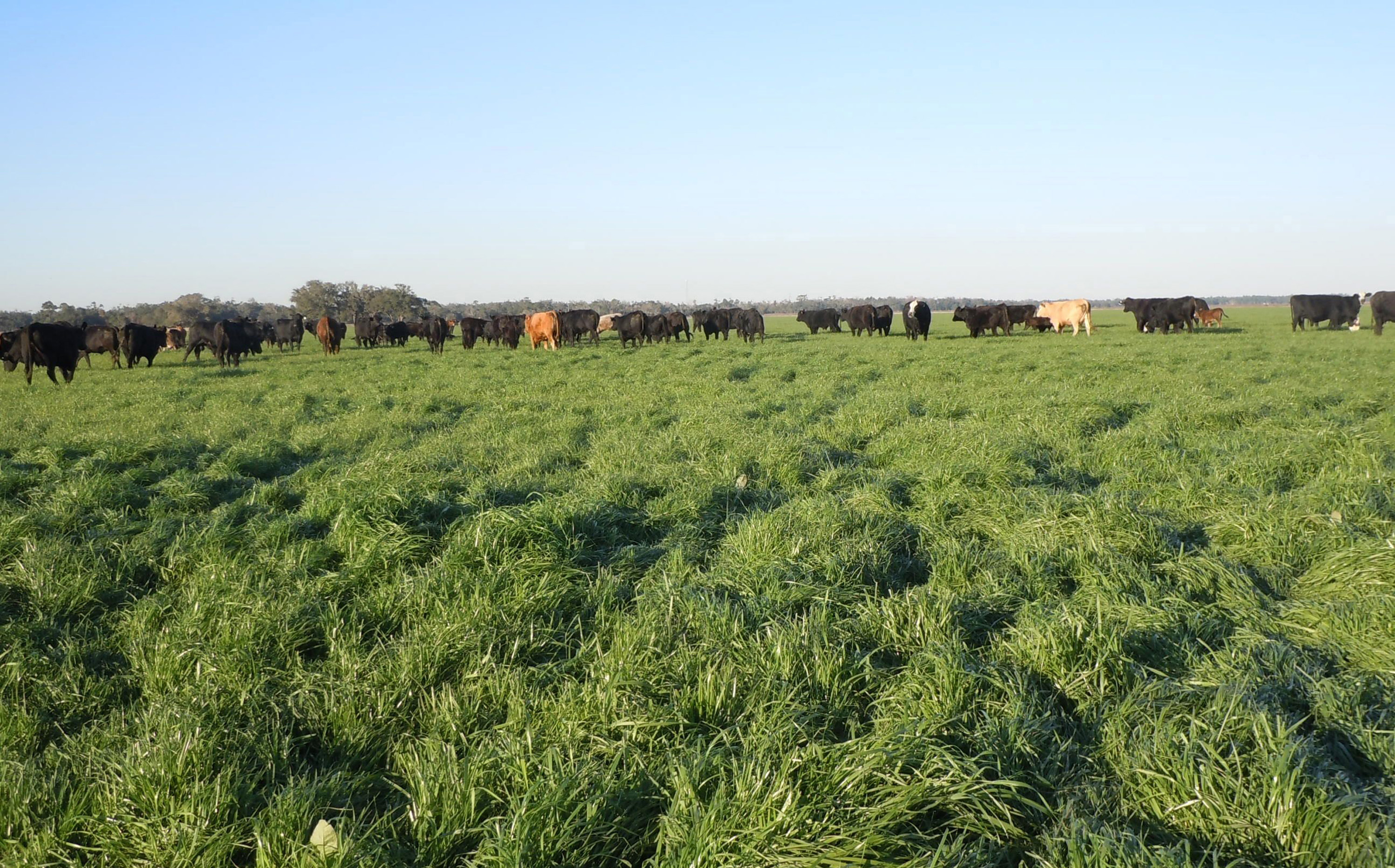Farm & Ranch
Meanwhile back at the ranch…

By Rafford Pullen
Fall is just around the corner, and now is the time to make plans for our winter forage program. How much, what and when are just a few of the questions we need to be thinking about since in the North Texas area, our ryegrass and small grains will be planted in September.
This article will be devoted primarily to the best method on “how to plant” your winter forages to get the best results. Most of these planting methods can also be found by going to our website, www.pullenangus.com, and clicking on the Marshall Ryegrass tab.
Over-seeding perennial pastures is by far and away the most popular way winter forages are planted by cattle producers. Most failures are seen where pastures are seeded by either a no till drill or broadcast into a pasture where the grass is so tall that sunlight cannot reach the seed after it germinates.
Plants do not grow in the shade, and as a result, there will not be much, if any, growth until the existing forage has been set back by a freeze, which usually occurs in November and by that time day length is shorter, temperatures are lower and there is little to no growth until spring.
There are several options to prevent this and the best overall, in my opinion, is to graze the pasture very short then run a disc over it set straight since we are not trying to turn any soil but only trying to cut the roots on the existing pasture to allow sunlight penetration to begin as soon as the winter forage germinates.
In the case of broadcast seed, it makes no difference if you disc prior to or immediately after seeding. If the seed is planted with a no till drill, running the disc prior to planting would be our choice. While not entirely required if using a no till drill, the disc will set the grass back better than the drill. Research done on this resulted in doubling the amount of fall forage verses planting in short grass only.
To read more pick up a copy of the August 2017 NTFR issue. To subscribe call 940-872-5922.
Farm & Ranch
Managing Show Cattle Through The Winter

By Heather Welper
Husband and wife duo, Heather and Calvin Welper, are the Co-Owners and Operators or Two C Livestock, located in Valley View, Texas.
The pair’s operation has a show cattle focus where they raise and sell purebred heifers of all breeds and club calf Hereford steers.
When it comes to show cattle, the Welpers know a thing or two including how to prepare for the cold winter months and the Texas major show season run.
To read more, pick up a copy of the November edition of North Texas Farm & Ranch magazine, available digitally and in print. To subscribe by mail, call 940-872-5922.

Farm & Ranch
Double M Ranch & Rescue

By Hannah Claxton, Editor
As the sun rises each day, so do the dozens of mouths that Meghan McGovern is responsible for getting fed. Rather than the sounds of a rooster crowing, McGovern hears the bellows and bleats of a variety of exotic deer, the chortle of kangaroos, the grunts of water buffaloes, and the chirps of a lemur.
Nestled against the banks of the Red River, the Double M Ranch and Rescue, with its high game fences and deer sprinkling the landscape,s its in stark contrast to the surrounding ranches.
“Having deer is kind of like eating potato chips- you can never actually have just one,” said McGovern with a laugh.
McGovern has several herds to take care of- fallow deer, axis deer, water buffalo, goats, and bison. In smaller numbers, there’s also a few kangaroos, a lemur, a potbelly pig, a pair of zebras, a watusi, and a few horses.
To read more, pick up a copy of the November edition of North Texas Farm & Ranch magazine, available digitally and in print. To subscribe by mail, call 940-872-5922.

Farm & Ranch
Acorn Toxicity

By Barry Whitworth, DVM, MPH
With the prolonged drought, most pastures in Oklahoma end up in poor condition. With the lack of available forage, animals may go in search of alternative foods.
If oak trees are in the pastures, acorns may be a favorite meal for some livestock in the fall. This may result in oak poisoning.
Oak leaves, twigs, buds, and acorns may be toxic to some animals when consumed.
To read more, pick up a copy of the November edition of North Texas Farm & Ranch magazine, available digitally and in print. To subscribe by mail, call 940-872-5922.

-

 Country Lifestyles2 years ago
Country Lifestyles2 years agoScott & Stacey Schumacher: A Growth Mindset
-

 Country Lifestyles8 years ago
Country Lifestyles8 years agoStyle Your Profile – What your style cowboy hat says about you and new trends in 2017
-

 HOME8 years ago
HOME8 years agoGrazing North Texas – Wilman Lovegrass
-

 Equine1 year ago
Equine1 year agoThe Will to Win
-

 Outdoor10 years ago
Outdoor10 years agoButtercup or Primrose?
-

 Country Lifestyles5 years ago
Country Lifestyles5 years agoAmber Crawford, Breakaway Roper
-

 Country Lifestyles9 years ago
Country Lifestyles9 years agoJune 2016 Profile – The man behind the mic: Bob Tallman
-

 Country Lifestyles8 years ago
Country Lifestyles8 years agoDecember 2016 Profile, Rusty Riddle – The Riddle Way




